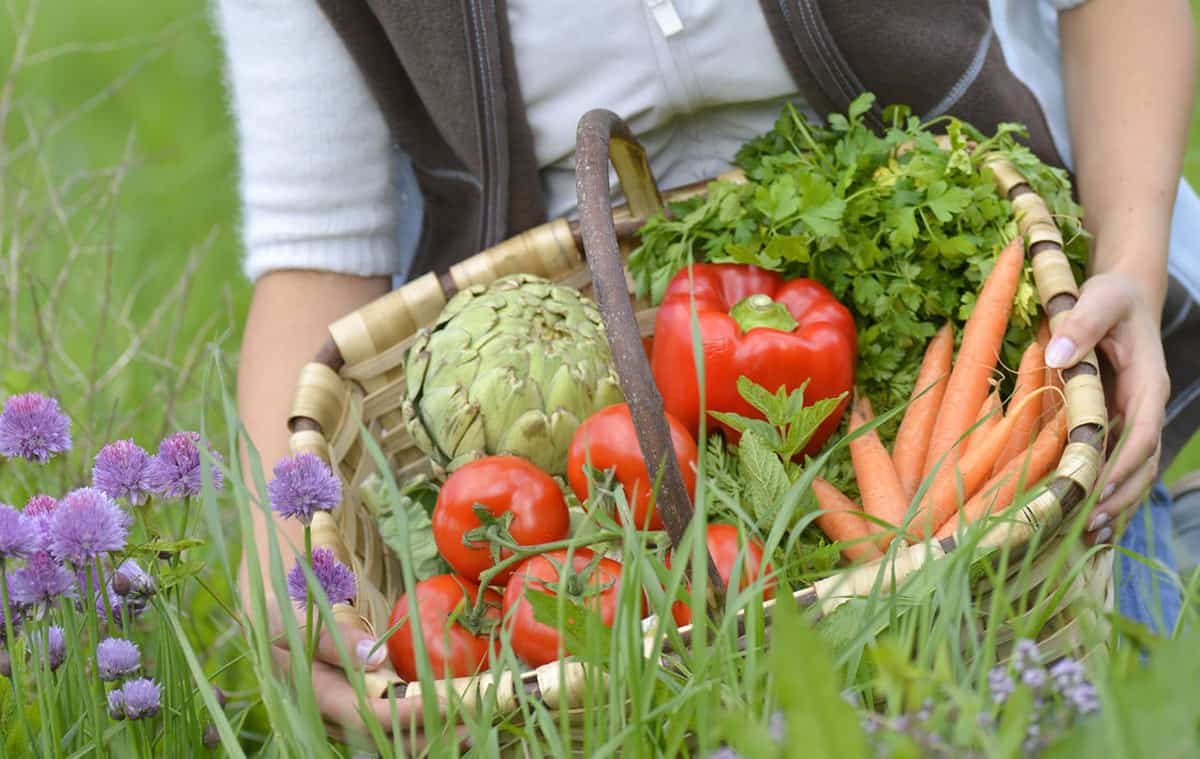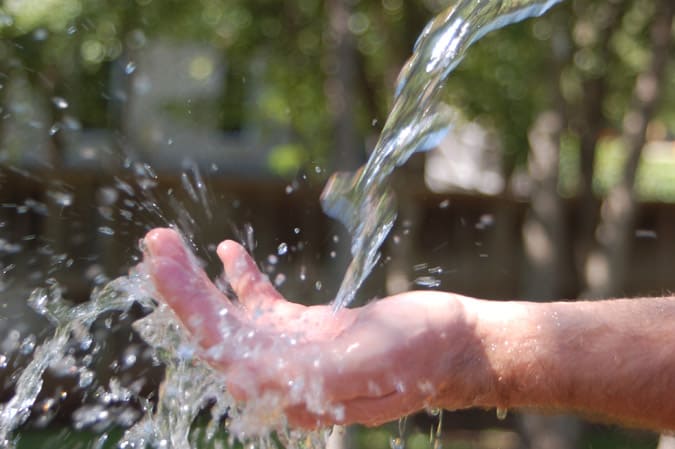
The first thing you need to know is anyone can have a green thumb. It’s really all about paying attention to the plants in the garden. There’s an old saying, The best thing for your garden is your shadow. Spend time in your garden and things will grow well.
The second thing you need to do to be a successful vegetable gardener is, Don’t overthink this. Really, it’s just plants in dirt. All they really need is air, water, and sun. Provide those things in a balanced way and your garden will grow.
1. Choose the right location
A successful vegetable garden needs a lot sunshine and a little afternoon shade. This requires some thought, so spend a bit of time in your yard watching the light at different times of the day. Also, pay attention to your trees and your neighbor’s trees. Watch the way the sun shades an area beneath a tree. A sunny winter spot under a deciduous tree might be completely shaded when the tree leafs out.
2. What type of beds do you want

This decision should be made fairly early in the planning process. There are several types of beds that are all good options with a blending of the three being an option, too. I have a few tips in this Beginning Gardening Tips .
- Raised/Square Foot Beds– Raised or square foot beds are one of the simplest ways to start a vegetable garden. The materials are inexpensive, you don’t need to till the soil, and there is a weed barrier which helps prevent grass from getting into your garden. While square foot beds are the most common, there are other options that work just as well. Galvanized animal troughs are a perfect example.
- Pots – If space is limited then pots are a great solution. Large, medium, and small pots are great for growing all sorts of vegetables. Some veggies that do great in pots are lettuce, peppers, herbs, and garlic. A pot is infinitely practical and can be moved easily to find the best sun.
- Plant directly in the soil – People have used this method of vegetable gardening for centuries. You till and amend the soil prior to planting. Our ancestors did the tilling by hand and used manure to amend the soil. This still works today but using a tiller (which can be rented at most home stores and occasionally borrowed from a friend) is a lot faster. It is best to get a soil sample tested to see what your soil is missing. Most nurseries will have information on this as well as soil amendments. You will want to create rows with mounds for most planting. The concept of companion planting is ideal for these sorts of beds.
3. Starter Plants or Seeds?
I know you’ve done this before. You see a collection of seeds at the garden center, purchase them, and think that will just pop up after planting. Well yes and no. Some seeds like lettuce are better at this than others (like broccoli). For new gardeners I strongly recommend purchasing small starter plants rather than trying to propagate from seeds. At my garden center, they sell ready-to-plants starters for $1.29. For around $30 I can get 20-25 plants. If you’re new to vegetable gardening, then that should probably be your limit anyway. Purchase seedlings for plants like tomatoes and peppers. Choose plants with strong stems and good color.
Some seeds need to be sown directly into the soil. Try simple ones like radishes, carrots, beans, lettuce, spinach, and chard. Check the package because some seeds do better with soaking prior to planting.
4. Plan for Watering

Unless you live in a place that gets a little rain shower every day, you will need a way to water your garden. I’ve had a watering system set up on a timer and I’ve used the hand watering method. Personally, I have better luck when I water by hand because I’m also pulling weeds and checking for bugs. Hand watering a garden is also a little bit of therapy. It usually takes about 15 or 20 minutes a day and I think it’s a great way to start off a day or relax at the end of a day.
No matter which way you plan to water, the point is you need a watering plan. Get some hoses and watering nozzles and plan to spend a few minutes every day in your garden.
5. Those Pesky Pests
This site may contain Amazon and other affiliate links. If you purchase something through the link, at no cost to you, I may receive a small commission on qualifying purchases.

Pests in the garden have been plaguing gardeners since the first gardens were planted. Birds will peck at your tomatoes and squirrels will snatch anything they can grab (except okra). Then there are the insects that invade. They’re all hungry; either plan to share or plan to keep them out.
For insects I recommend using natural and organic methods. I have a recipe for Garlic Pepper Tea that works great for a lot of pests (such as aphids). There are also some great products that work for getting rid of worms (like those evil tomato horn worms and cabbage loopers).
For these types of pests you will need a Bacillus Thuringiensis killer like Thuricide. Another good option is a insecticidal soap like Safer Brand 5118. One thing to remember about garden pests is this: If your soil is healthy then your plants will be healthy, and pests will not stick around.
For birds, squirrels, snakes, and any other critter, create barriers. I’ve used tulle netting to discourage birds and squirrels. Fencing your garden will also help keep out unwanted animals. (Think Peter Rabbit and Mr. McGregor!)
6. Fertilizer
If you want plants that produce healthy fruit you will need to fertilize those plants. I suggest using natural and organic products. There are so many options that I am going to point you to your local garden center for ideas and amounts.
There are two key things to remember about fertilizing your vegetable garden:
- Healthy soil produces healthy plants and healthy plants don’t need a lot of fertilizer (but they do need a little).
- Over-fertilizing will cause insect infestations. Don’t over-fertilize.
7. What and When to Plant

I have several books on vegetable gardening that talk about things like planting dates and companion planting. All of this is useful for experienced gardeners, but really what first time veggie gardeners need to do is plant things that grow well in your area.
Ask at your local garden center which plant varieties do well for novice gardeners in your area. Things like tomatoes, carrots, lettuce, spinach, chard, radishes, sugar snaps, and bush beans are some great starters.
Knowing the right time to plant is also important. Most garden centers will have a Planting Guide for YOUR area. Stick with this and you should have success. Another option is to stagger your plantings. After all, do you really want all of that lettuce coming in at once?
Some plants will hold out all season (like chard) while others have shorter lives (like lettuce). Plan for this and you won’t have to leave bags of zucchini anonymously on your neighbors porch at night.
Final Thoughts
A very experienced gardener once told me to ‘find an old-timer’ to help learn about vegetable gardening. Nothing could be truer. Someone who has spent years vegetable gardening in your area will be the most valuable resource you can find. They will have experienced every insect imaginable, shooed away untold numbers of critters, and shared overflowing baskets full of delicious vegetables.
Article source: http://www.seasonedhomemaker.com/start-vegetable-garden/



